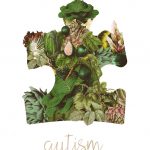Association Between Autism and Iron Deficiency
Iron deficiency (ID) is the most common and persevering nutritional disorder and continues to be an important public health problem worldwide. Specifically in children in the first years of life, hemoglobin (HGB) levels below 11 g/dL have been related to negative cognitive, social, and emotional effects that may lead to irreversible behavioral squeals, even after appropriate treatment.
A reduction of iron levels in the brain may be accompanied by changes in serotonergic and dopaminergic systems, cortical networks, and myelination.
Iron deficiency (ID) cause negative outcomes on psychomotor and behavioral development of infants and young children. Children with autism are under risk for ID and this condition may increase the severity of psychomotor and behavioral problems,The association between iron deficiency and developmental problems such as global developmental delay is thought to be bidirectional. Iron deficiency impairs the processes of neurotransmitter metabolism and myelin formation, as well as altering energy metabolism in the brain – effects that have been theorised to cause behavioural and cognitive developmental delays in children.
Thus, it can be considered that ID/IDA (iron deficiency anemia) may increase the severity of autistic symptoms in children with ASD.
View Full ArticleYou need to login or register to bookmark/favorite this content.


